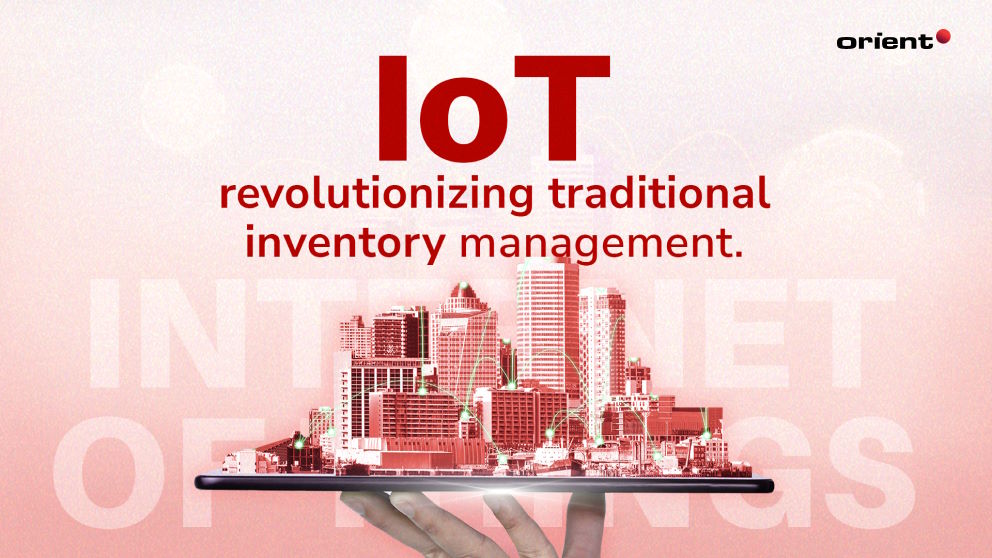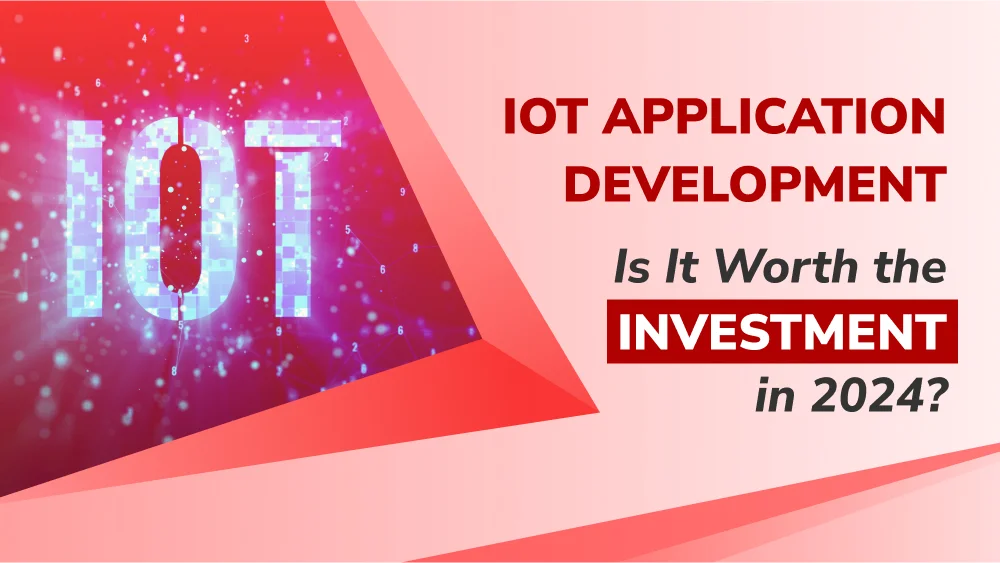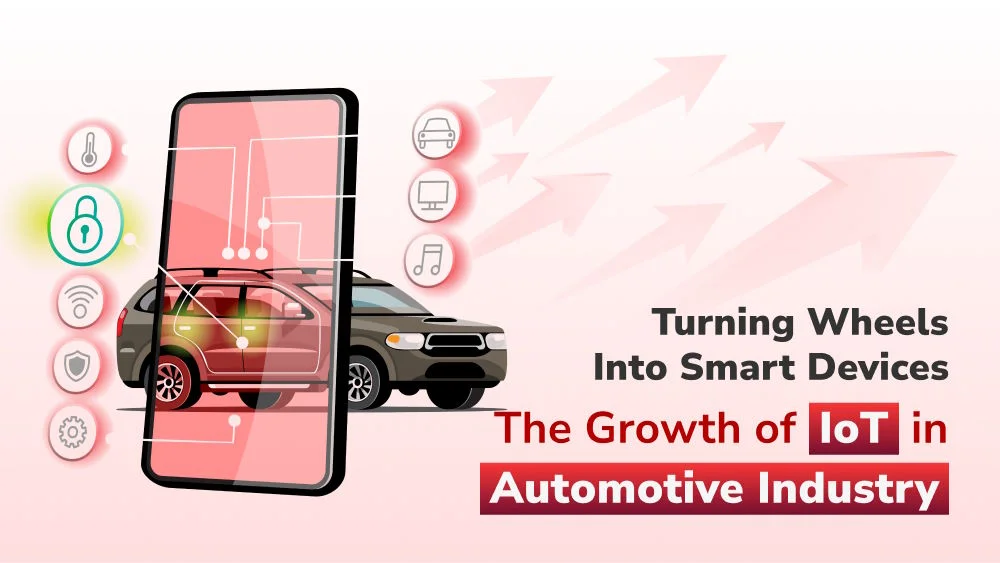
IoT in Healthcare: A New Era of Connected Medical Devices
How is IoT in healthcare revolutionizing patient care with connected medical devices?
Cutting costs while enhancing software quality is always challenging for businesses of any size. Fortunately, thanks to the rise of science and technology in recent years, companies have more than one suitable technology choice to integrate operations such as big data, artificial intelligence, blockchain, etc., improving efficiency and optimizing diverse internal resources.
Legacy inventory management systems that use the power of the Internet of Things (IoT) in the manufacturing process are a typical example in today’s competitive landscape. As the strong impact of digital transformation has contributed to changing consumer behavior towards online shopping, IoT brings new reforms to supply chains only through the help of IoT sensors.
No more paperwork and manual tasks; IoT in inventory management changes the way owners do business and improve their bottom line. How can?

Traditional inventory management methods refer to the processes by which employees manually track and manage inventory-related activities without the use of modern technologies, including IoT. Although these methods are outdated, they can still be effective for startups, small-scale businesses, or those operating in areas with limited resources and specific operational constraints.
Specifically, a traditional inventory management system typically includes these aspects.
In traditional inventory management, warehouse tracking and managing is done through manual counting methods. Typically, through periodic physical audits, warehouse staff are responsible for physically going through the warehouses where the inventory is stored, counting each individual item, and recording the exact quantities.
Although this is still considered an accurate snapshot of inventory levels if carried out diligently, businesses may find it challenging to avoid issues in manual stock counts. Human error occurring during the counting process, for example, is one of the main reasons negatively affecting supply chain efficiency.
Reorder point systems are common in traditional methods to determine when it is time to replenish a specific inventory. By manually monitoring factors such as historical demand data, lead times, and desired safety stock levels, businesses determine the reorder point and immediately initiate the procurement process when inventory levels reach or drop below that point.
While manual monitoring gives business owners control over the timing and specifics of procurement activities, the reorder point system is unable to adapt to sudden changes that could promptly impact inventory levels.
Rather than being processed individually, batch processing in traditional inventory management methods requires employees to group orders together and process them at specified intervals. Businesses can deploy such processes daily, weekly, or at predetermined intervals based on operational needs to accumulate the number of orders before initiating the fulfillment process.
Although batch processing orders offer some efficiency benefits, they lead to longer lead times, causing customer requests to be delayed and interrupting the user’s product experience.
Businesses mainly use historical data collected from various sources, such as sales records, purchase orders, and physical stock counts, to predict and plan for future customer demand. By manually analyzing and reviewing data related to stockout occurrences and other key performance indicators, managers improve inventory management and identify areas for improvement.
Because the analysis process involves human intervention, there is a greater risk of human error during the collecting, inputting, and interpreting of data. Obviously, manual data analysis methods take more time and effort than using advanced technology. A lack of real-time insights can potentially limit the ability to respond quickly to changes in market conditions.

The smart inventory management method, which integrates advanced technologies such as IoT, is considered one of the solutions that revolutionize the way businesses track and manage their inventory. By leveraging IoT sensors and connectivity, companies gain huge amounts of real-time inventory data that can be used for automation, predictive maintenance, and predictive analytics.
How has real-time visibility in IoT systems transformed warehouse and logistics operations? Here are some key aspects of smart inventory management with IoT.
In the modern era of inventory management, businesses transform and access types of IoT devices, including RFID tags, barcode scanners, and GPS trackers, to track their inventory items in real-time. Companies no longer have to waste effort on manual tracking as they now always know the exact location and status of their inventory.
For instance, RFID tags are attached to individual pallets or items to help businesses identify each item’s movement throughout the supply chain. Up-to-the-minute updated locations and the status of the inventory data are the basis for helping companies anticipate delays, streamline their operations, and improve overall efficiency.
Surely, you have heard at least once about the combination of IoT and big data. With the help of IoT sensors, businesses gain massively accurate data related to customer behavior, temperature, and movement every minute passed by completely automatically.
The real-time nature of automated data collection plays a significant advantage in warehouse operations. Automated data collection provides businesses with meaningful insights that can be utilized to optimize their warehouse processes, from maintaining the quality and freshness of perishable goods to preventing damage to inventory.
With the right approaches, raw data from IoT sensors becomes valuable assets to inventory management systems. There are many types of data. Each type of data brings different insights, contributing to building an efficient inventory management system.
Specifically, analyzing historical sales data and market trends helps predict product demands with a high level of accuracy to serve the process of adjusting procurement strategies accordingly. Analyzing data related to supplier performance and lead times helps identify areas for improvement. Analyzing the operation of IoT devices helps detect anomalies or deviations that may harm warehouse and logistics operations.
The emergence of smart reordering systems almost completely eliminates the situation of untimely improvisation with sudden changes related to inventory management. With real-time inventory data collected through IoT technology, businesses automate the replenishment process when stock levels reach a predefined threshold without the need for human assistance.
Not only does it notify business owners of warehouse status, but intelligent reordering systems also have the ability to issue emergency signals specifically for cases where customer orders are out of control or less than normal, ultimately reducing the risks of stockouts or unnecessary stocks as well as developing seamless collaboration and communication across the supply chain.
IoT in inventory management systems helps businesses solve difficulties in the reporting process. While some systems simply provide data to summarize the warehouse situation, some modern ones today can generate comprehensive reports and analytical dashboards automatically based on the volume of stored data.
No matter what form they exist, IoT-based inventory management systems play an important role in offering valuable insights into inventory performance, stock turnover rates, and demand patterns, enabling businesses to make data-backed decisions and optimize their inventory management strategies.

If you are still not convinced of the combined power of IoT and inventory management, there is evidence that will change your mind and provide a more in-depth understanding of IoT applications in supply chains. Below are some popular names in the field that successfully implement IoT in their operations.
Amazon is known as a giant in the retail industry, providing a variety of products and services to customers worldwide. With rapid growth every year, big challenges in inventory management are inevitable for Amazon.
Instead of requiring employees to be responsible for small tasks such as scanning barcodes, moving items, or packaging, Amazon integrates IoT into operations and lets robots perform these tasks instead. The workforce has more time to focus on core competencies that deliver value. Businesses limit human errors and increase warehouse management efficiency.
With a strong worldwide presence, DHL is recognized as a leading logistics company specializing in international shipping, courier services, and transportation. To achieve the goal of providing fast and high-quality services to their clients, DHL has long used a wide range of devices that integrate IoT technology.
In warehouses, DHL uses robots, drones, autonomous vehicles, and smart glasses to improve productivity and reduce human efforts on basic tasks. It is also currently collaborating with CISCO to complete an IoT-based supply chain system for access to observe activities in real-time.
Alibaba is a Chinese multinational technology company that specializes in e-commerce, retail, and Internet services. At the event called “The Singles Day,” Alibaba successfully launched a fully automated warehouse run by robots. This IoT-powered system allows them to shorten lead times, improve efficiency in terms of resource optimization, and create an environment with error-free product deliveries.
It is undeniable that implementing IoT in inventory management is a wise choice for businesses seeking to optimize operational efficiency. However, IoT technology is still developing, leading to some unsolved limits. Specialized resources and high infrastructure requirements present companies with countless challenges in the development process.
There is no denying the great benefits that IoT brings to inventory management. However, without the right approach from the beginning, businesses may end up wasting time and money. You can consult with experts from Orient Software for success commitment. With reliable Internet of Things services, we are a trusted partner of many multi-industry customers worldwide.
How is IoT in healthcare revolutionizing patient care with connected medical devices?
Thinking of implementing an IoT system into your business? From enhanced security to better customer service, here’s how IoT technology can help you grow.
This beginner-friendly guide explains everything you need to know about IoT architecture!
How is smart technology revolutionizing vehicles and driving experiences? Explore the impact of IoT in automotive industry.
Discover how the enormous influence of IoT in telecommunications can enable new services, increase efficiency, and improve the overall customer experience.





